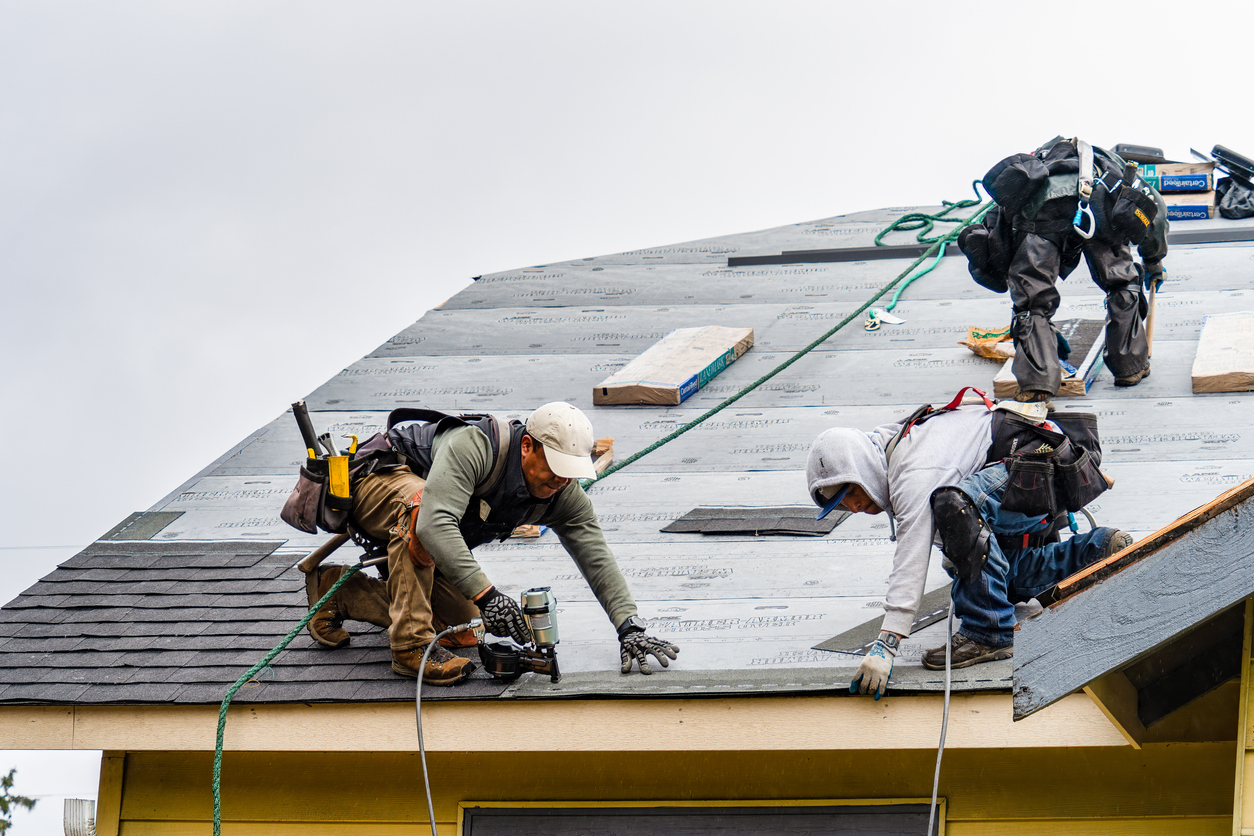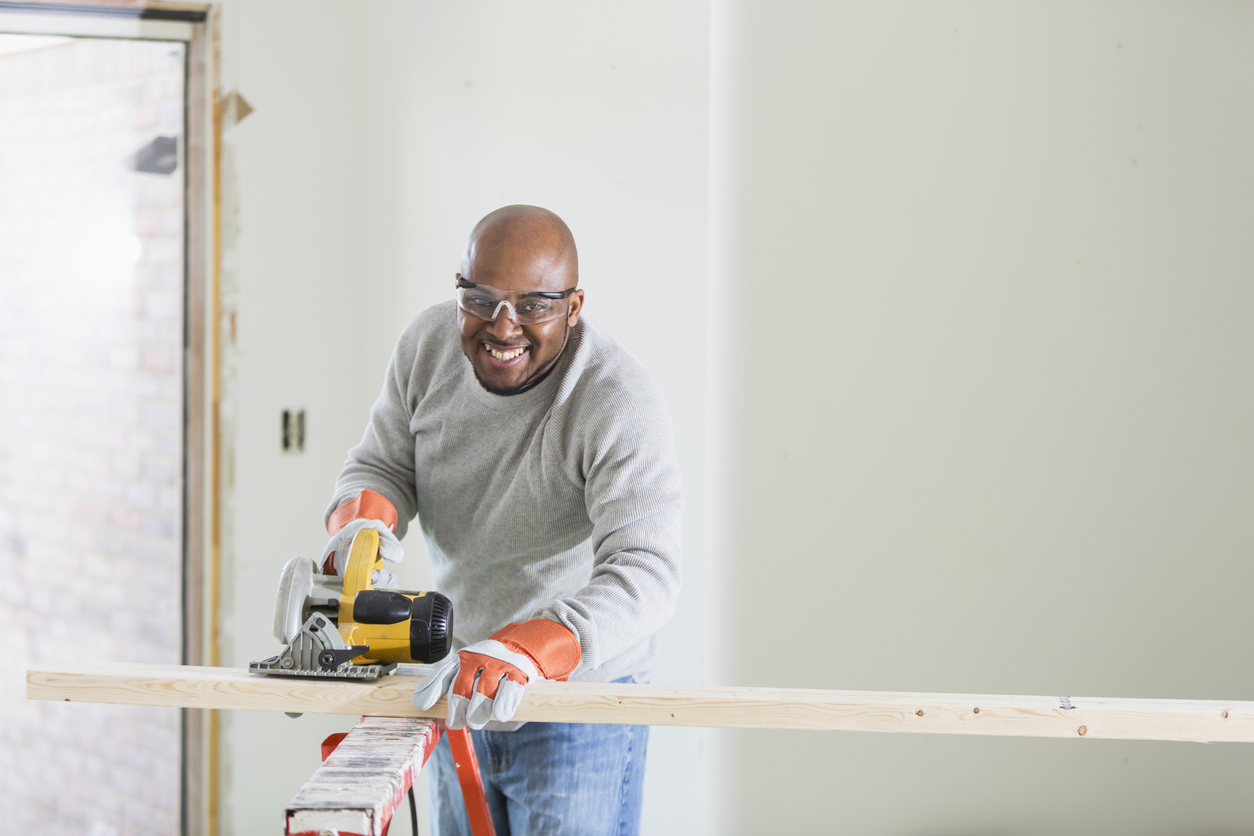We may earn revenue from the products available on this page and participate in affiliate programs. Learn More ›
Welcome to Bob Vila’s Guide to House Flipping, a series dedicated to showing you the best places for house flipping, crucial steps for selecting a property, must-do upgrades and repairs, and surprising ways to reduce your costs to get the most from your house flipping sales. Here you’ll find fresh insights mixed with Bob’s tried-and-true advice, our vetted shopping guides, and the inside track to the right professionals to get your flip to the finish line.
Everyone’s heard how easy it can be to make money flipping houses. However, it’s a little more involved than just buying the first fixer-upper you see, slapping on a coat of paint, and putting it back on the market. Successful house flipping involves identifying a suitable property and accurately estimating how much it will cost to fix it and how much it will likely sell for once it’s repaired.
House flipping isn’t for the faint of heart. Yes, there is money to be made if it’s done properly, but potential flippers can find themselves financially underwater if they choose the wrong house or fail to fix it up and turn it quickly. Before making an offer on any distressed home, keep the following in mind.
What Is House Flipping?
House flipping is the process of buying homes that need updating or repairs, fixing them up quickly, and then selling them at a profit. Hands-on house flippers are typically DIY types that want to do the upgrading work themselves to enjoy more profit, but other house flippers never touch a paintbrush—they hire pros to do the repair work.
A relatively new practice on the house-flipping scene is micro flipping, whereby the investor seeks out under-valued houses that need very little work. The investor buys the homes, has them cleaned and spruced up, and then sells them. Micro flipping is a speedy process, and to be successful, the investor must know the market and be able to resell the house quickly.
How to Start Flipping Houses
Your chances of successfully flipping a house increase when you approach the project in a business-minded manner. Avoid impulse purchases. The following steps will help you learn how to flip houses while minimizing financial risk. The best way to flip a house is to follow tried-and-true real estate investment practices, such as those we detail here.

1. Do diligent market research.
Knowing the real estate market in your area is vital for profitable house flipping. The best cities for flipping houses vary from year to year, based on multiple criteria. When pinpointing the most lucrative communities for a successful house flip, financial gurus look for communities where homes are increasing in value and the median household income is high. They’ll also look at the average time a house is on the market before it sells (shorter is better) and factor in the percentage of homeowners versus renters.
Buying a fixer-upper in one of those communities doesn’t guarantee success, however. It’s up to the individual buyer to do some additional research.
- Consider the cost of remodeling. If costs are reasonable, it increases the chance the buyer can turn a profit on the completed house.
- Compare listing prices with sales prices. This will tell you whether sellers are getting what they want from their houses. If houses are selling for within 1 to 5 percentage points of the asking price, there’s a good chance a flip house will too.
- Factor in the number of agents. In communities where houses are selling quickly, you’ll typically find plenty of real estate agents. If the area has only a few agents, it may be a sign the housing market isn’t lucrative.
MORE ON GETTING STARTED:
➤ 5 Important Things to Know Before Flipping a House
➤ The 10 Best Cities in the U.S. for House Flipping
2. Nail down your budget and financing.
Don’t make the mistake of thinking you can’t flip houses just because you don’t have the cash to buy the homes. If your credit is good and you can demonstrate to the lender that the house you choose has potential, you can often get a loan to buy and repair it.
The cost to flip a house includes the purchase price plus the cost of repairs, insurance to protect your investment, holding costs, utilities, and property taxes. It also includes the capital gains taxes you’ll pay when you sell the house at a profit. Research all potential costs before making a purchase. Potential lenders will want to see your financial plan for the house.
Consider the 70 percent rule of house flipping when determining whether you can make a profit. The 70 percent rule is just a general guideline, but it can help newbie house flippers decide whether the house is a good risk. Here’s how to use the rule:
- Estimate the home’s after-repair value (ARV): This is the amount the house will likely sell for after it’s fixed up. A real estate agent can help you estimate this value. For example, let’s say the house will likely sell for $250,000 after it’s repaired. Its ARV is $250,000.
- Now, multiply the ARV by .70. In our example, $175,000 is 70 percent of the home’s estimated $250,000 after-repair value.
- Subtract estimated repair costs from ARV: The result is the maximum amount you should pay for the house. In our example, the ARV is $175,000. If we think it will take $35,000 to repair the home, we will subtract $35,000 from $175,000. This gives us $140,000, which is the most we would want to pay to purchase the house.
Like all rules, the 70 percent rule is just a parameter. In a hot market where houses are selling for full asking price within days of being listed, you could probably push the 70 percent rule up to 80 percent, or even slightly higher. The key is knowing the market and understanding the risks. It’s always better to err on the side of caution.
MORE ON FINANCING A FLIP:
➤ How Much Does it Cost to Flip a House?
➤ The 70 Percent Rule in House Flipping, Explained
➤ How to Flip a House With No Money

3. Hire the right help.
It can be tempting to try and go it alone when flipping a house, but it can backfire. It’s understandable to want to save money and make a more significant profit by trying to do all the work yourself, but unless you’re a real estate and construction pro, that’s a risky idea. Hiring knowledgeable professionals will cover your bases and you will assume less risk. This is especially important for new house flippers without experience in real estate. You can still be successful flipping houses, but don’t make the mistake of trying to go it alone.
- Inspectors: A lender can require a professional inspection before loaning you the money to buy the house, but if not, paying for an inspection is worthwhile, so you know the extent of the problems right off the bat. Discovering a significant defect when you’re already in the process of repairing the home can quickly eat up any profits you might have otherwise earned.
- Contractors: Some things you may want to DIY—such as painting—but leave the big stuff, such as structural repairs, window replacement, and roofing, to the pros.
- Real estate agents: An agent will typically take a 5 to 6 percent commission on a sale. That’s a big chunk of change, but hiring an agent is the best method to sell the property quickly. In the long run, it is usually well worth the cost.
4. Know what makes a good flip house.
After ensuring the current housing market is optimal and your financing is in place, there’s still a vital part of the flip-house-hunting equation to consider—buying the ideal house. The house should be a good investment, but what does that mean when it comes to house flipping? Consider the following.
- Condition: A good prospect is a house that needs some work but not major repairs. While this can vary based on the amount of money you plan to spend, it’s typically better to limit updates to new flooring, paint, siding, and roofing rather than tackling major renovations that include excavating around the foundation and fixing structural issues. Unless you’re in the construction trades, having a contractor look at the house before you buy is crucial.
- Location: This incorporates several things—the most common is a desirable neighborhood, which will increase the possibility of selling the house. However, it also means the proximity of the house to where you live or work, considering you’ll likely be visiting the place daily to work on it or to supervise the work of others.
- Underpriced: For a successful flip, you must buy the house at a bargain and sell it at a profit. That means that for whatever reason, the current seller is willing to let the house go for less than fair market value.
MORE ON SELECTING THE RIGHT HOUSE:
➤ Don’t Forget This Crucial Step When Shopping for a House to Flip

5. Make only essential updates.
Buyers aren’t going to pay extra for light fixtures that you fall in love with or an in-ground hot tub. They may enjoy your upgrades, but you won’t make a profit from them. In fact, you could lose money. A good rule of thumb is to make only essential updates—the ones necessary to make the house immediately livable—and then let the new homeowners make their own special upgrades.
Doing more than is required to sell the house is just one house-flipping mistake, but it’s a big one. The most significant mistake is underestimating the cost of repairs. In any case, err on the safe side and don’t spend extra for those personal touches the next buyer might not care about.
MORE ON FLIP RENOVATIONS:
➤ 8 House Flipping Mistakes to Avoid at All Costs
➤ 10 Insider Secrets for Reducing the Cost of Your Flip House Renovation
6. It pays to be speedy.
The sooner you get the house fixed, the sooner you can get it back on the market, and the quicker you can realize a profit. In most situations, repairing the home quickly is your best bet for making money. If you’re borrowing the money to buy and fix the house, the longer it takes, the more interest you’ll have to pay the lender. You’ll also have to pay property taxes for the time you own the house and utility bills, so being speedy can save money.
Typically, you’ll keep the project on track better if you hire professionals to do the repairs. However, if you’re knowledgeable in a DIY field, such as flooring, you can save money by laying new carpet yourself. Just be honest and resist tackling repairs you know nothing about.

7. How to sell a flip house.
Selling a flip house can be divided into two separate phases—prepping the house for sale and then analyzing, negotiating, and accepting an offer.
Unless you already have a potential buyer lined up, it’s usually best to list the house with a real estate agent who can access the community’s multiple listing service (MLS). Having the home on the multi-list is the best way to reach potential buyers. For most flip-house sellers, it’s well worth the commission paid to an agent.
- Prep for sale: Don’t overlook the final touches that make the house attractive to buyers. A real estate agent can help here, but you’ll generally want the house to make an excellent first impression, so make sure it looks good from the curb. Focus on cleaning every nook and cranny (clean sells). If the house is in an upper price range, consider having it professionally staged to show buyers what it could look like to live there.
- Accepting an offer: If you’ve followed all the steps along the way, purchased a flip house that meets the 70 percent rule, and the house is in a hot market, odds are you’ll get an offer shortly after you list the house. There’s a saying in the real estate industry, “First money is best money,” which just means don’t be too picky if an offer comes in slightly below the asking price. Keep in mind that the longer you own the house, the higher your holding costs will be.
MORE ON MAKING A PROFIT:
➤ 12 Final Touches That Can Help Sell a Flip House for More Money
➤ What to Do if You Can’t (or Don’t Want to) Sell Your Flip House
How Long Does it Take to Flip a House?
A lot occurs between the time you purchase a flip house and the moment you close its sale. Depending on the type of repairs needed, you could be looking at a time frame from 8 weeks to 6 months or longer.
However, real estate has no hard-and-fast rules because every house is different, and every situation is different. Having all your ducks in a row before you buy the house makes you less likely to run into surprises, such as structural problems that slow the repair process or running out of money before the house is repaired. Remember that flipping a house is a business decision, so use logic and hard figures rather than emotions when buying a home to flip, and you’ll be ahead of the game.

Final Thoughts
Flipping homes is appealing because it offers the lure of making big money relatively quickly. It’s not a foolproof investment, however. It requires researching the housing market and lining up agents who can help navigate the purchase and sale of the house, as well as contractors who can handle the updating and repairs.
The amount of money earned from house flipping varies widely from one community to the next and depends on several factors. House flippers who fix and flip a single house per year as a hobby could earn anywhere from $5,000 to $50,000 or more, while someone who purchases and flips many homes in a year could earn more than $200,000. The amount of profit also depends on choosing the correct house, hiring the right contractors, and working with the top real estate agents.
To succeed, a flip house should be purchased at a price lower than fair market value, which is common when a home needs repair, and the current owner doesn’t want to take the time or pay for the repairs. It must also be located in a community with a healthy real estate market.
House flipping doesn’t have to be difficult, as long as you follow good practices and don’t try to go it alone. The trick to profitable house flipping is to avoid impulse buying and resisting the urge to update the house in a way that suits your personal tastes rather than those of the average home buyer.


